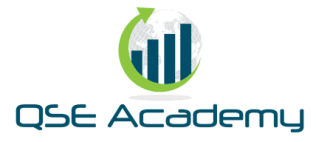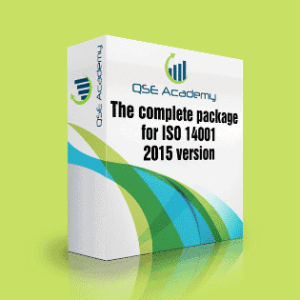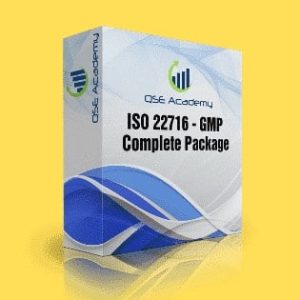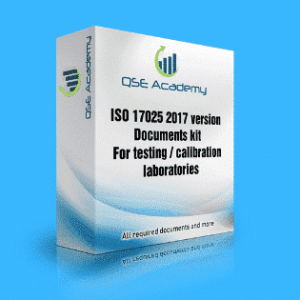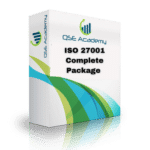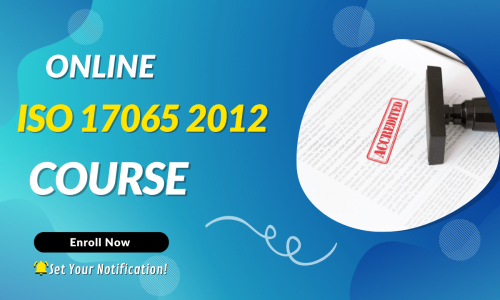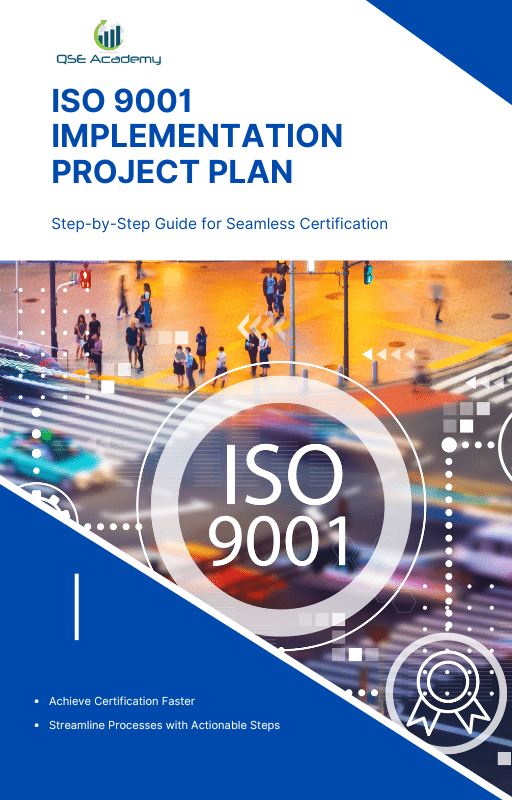Does ISO 9001 require first article inspection?
Does ISO 9001 require first article inspection?
If you work in manufacturing or quality management, you’ve probably heard of First Article Inspection (FAI). It’s a process used to verify that the first piece produced in a manufacturing run meets all design and quality specifications before full production begins. But here’s a common question: Does ISO 9001 require first article inspection?
At first glance, ISO 9001 and FAI seem closely connected—both focus on ensuring product quality and preventing defects. However, the answer isn’t as straightforward as a simple “yes” or “no.” While ISO 9001 require first article inspection may not be a direct rule in the standard, many companies use FAI as part of their ISO 9001-compliant quality management system (QMS).
So, when does ISO 9001 require first article inspection, and when is it optional? In this article, we’ll break it down step by step. We’ll explore what FAI is, how it fits into an ISO 9001 QMS, and whether your company needs to implement it. Let’s get started!
Understanding First Article Inspection (FAI)
Before we dive into whether ISO 9001 require first article inspection, let’s first understand what First Article Inspection (FAI) actually is and why it’s so important in manufacturing.
What is First Article Inspection?
Imagine you’re about to bake a huge batch of cookies for an important event. Before you bake hundreds, wouldn’t you test the first one to make sure it turns out just right? That’s exactly what First Article Inspection does—except in manufacturing, the “first article” is the first piece produced in a batch, and instead of checking for taste, manufacturers verify that it meets all required specifications.
FAI is a detailed inspection and verification process that ensures the very first product off the production line is made exactly as intended. This prevents defects from spreading across an entire batch, saving time, money, and resources.
Why is First Article Inspection Important?
So, why do many companies rely on First Article Inspection? Here are a few key reasons:
✅ Prevents Mass Production Issues – If the first product is defective, the manufacturer can correct the process before producing hundreds or thousands of flawed units.
✅ Ensures Compliance with Specifications – FAI checks whether all design, material, and process requirements are met before full production begins.
✅ Reduces Costly Rework and Waste – Catching mistakes early means avoiding expensive fixes later on.
✅ Required by Certain Industries and Customers – While ISO 9001 require first article inspection isn’t a universal rule, many industries (such as aerospace, automotive, and medical device manufacturing) mandate it for compliance with their own strict quality standards.
Does Every Company Need First Article Inspection?
Not necessarily. While ISO 9001 require first article inspection isn’t a specific requirement, some businesses choose to implement FAI as part of their ISO 9001 quality management system (QMS). Others rely on alternative inspection methods, such as in-process inspections or statistical sampling, to ensure quality.
In the next section, we’ll explore whether ISO 9001 require first article inspection under its quality guidelines and when it might be necessary for your company. Let’s take a closer look!
Does ISO 9001 Require First Article Inspection?
Now that we understand what First Article Inspection (FAI) is and why it’s valuable, let’s answer the big question: Does ISO 9001 require first article inspection?
The short answer is no, ISO 9001 does not explicitly require First Article Inspection. You won’t find a specific clause in the ISO 9001 standard that says, “You must perform FAI.” However, that doesn’t mean it’s irrelevant. In fact, many companies that follow ISO 9001 choose to implement FAI because it helps them meet key ISO 9001 requirements related to quality control, risk management, and process validation.
What ISO 9001 Requires for Quality Control
While ISO 9001 require first article inspection may not be a direct rule, the standard does have some key requirements that FAI can help fulfill. Here are a few examples:
✅ Clause 8.5.1 – Control of Production and Service Provision
ISO 9001 requires companies to ensure that their production processes are carried out under controlled conditions. FAI can be used as a verification tool to confirm that a process is correctly set up before full-scale production begins.
✅ Clause 8.6 – Release of Products and Services
Before delivering a product or service to a customer, ISO 9001 requires companies to verify that it meets all quality requirements. First Article Inspection is one way to do this—by checking the first product before mass production starts, you reduce the risk of defects later.
✅ Clause 6.1 – Actions to Address Risks and Opportunities
ISO 9001 is built on risk-based thinking. That means businesses need to identify potential risks in their processes and take proactive measures to prevent quality issues. Using FAI as a risk-reduction strategy aligns perfectly with this principle.
When Might ISO 9001 Indirectly Require FAI?
Even though ISO 9001 doesn’t mandate FAI, there are situations where it might still be necessary:
1️⃣ If Your Company’s Quality Management System Includes FAI – Some businesses document FAI as part of their internal ISO 9001-compliant processes. If it’s written into your procedures, then you must follow it.
2️⃣ If Customers or Industry Standards Require It – Many industries, such as aerospace, automotive, and medical device manufacturing, require FAI as part of their supplier agreements. If your customers expect FAI, then it effectively becomes a requirement.
3️⃣ If You’re Introducing a New Process or Supplier – ISO 9001 encourages companies to validate new processes to ensure quality. If you’re using a new supplier or making a significant production change, performing an FAI can demonstrate compliance with ISO 9001’s quality control principles.
So, Should You Use First Article Inspection?
While ISO 9001 require first article inspection isn’t a hard rule, it’s a best practice that many companies adopt to strengthen their quality management system. If your industry or customers require it, or if you want to minimize risks in production, implementing FAI can help ensure you’re meeting ISO 9001 quality objectives.
In the next section, we’ll explore how FAI fits into an ISO 9001 system and what alternatives businesses can use if they don’t perform First Article Inspection. Let’s keep going!
How First Article Inspection Fits Into an ISO 9001 System
By now, we know that ISO 9001 require first article inspection isn’t explicitly stated in the standard, but many companies still choose to include it in their quality management system (QMS). So how does FAI fit into an ISO 9001-compliant system?
Think of it like this: ISO 9001 provides a framework for ensuring quality, but it doesn’t tell you exactly how to do it. Instead, it requires companies to implement effective quality control processes—and First Article Inspection is one of the tools that can help meet those requirements.
FAI as a Tool for Compliance with ISO 9001
Even though ISO 9001 require first article inspection isn’t a direct rule, using FAI can help fulfill several ISO 9001 requirements, such as:
✅ Process Validation (Clause 8.5.1) – FAI helps verify that production processes are correctly set up before mass production, ensuring consistency and reducing risk.
✅ Product Verification (Clause 8.6) – ISO 9001 requires companies to confirm that products meet customer requirements before delivery. FAI provides documented proof of compliance.
✅ Risk-Based Thinking (Clause 6.1) – One of ISO 9001’s core principles is preventing issues before they happen. Performing an FAI minimizes the risk of defective products by catching problems early.
Alternatives to First Article Inspection Under ISO 9001
If your company doesn’t use FAI, there are other ways to meet ISO 9001’s quality control expectations. Some businesses choose alternative inspection methods that align with their QMS while still ensuring high-quality production.
🔹 In-Process Inspections – Instead of inspecting just the first part, some companies perform ongoing inspections throughout production to catch issues in real time.
🔹 Statistical Process Control (SPC) – This method uses data analysis to monitor process performance and detect any variations that could lead to defects.
🔹 Final Inspection and Testing – Some manufacturers rely on a detailed final inspection at the end of production rather than checking the first unit.
While these alternatives work well for some companies, FAI remains a preferred choice for industries where precision and compliance are critical.
So, Should Your Company Use First Article Inspection?
The decision depends on your industry, customer requirements, and internal quality policies. If your business deals with high-precision manufacturing, aerospace, medical devices, or automotive production, FAI might be the best approach to ensure compliance and meet ISO 9001 requirements.
In the next section, we’ll dive into when FAI is most commonly used and how businesses can implement it effectively within their ISO 9001 QMS. Let’s explore!
When Should Your Company Use First Article Inspection?
Now that we know that ISO 9001 require first article inspection isn’t a strict rule but can be an effective quality control tool, the next question is: When should your company use it?
The answer depends on your industry, customer requirements, and the type of products you manufacture. While not every company needs First Article Inspection (FAI), certain situations make it a valuable and even necessary step in ensuring ISO 9001 compliance.
Industries Where First Article Inspection is Common
Some industries have stricter quality requirements, where even a minor defect can cause serious consequences. In these cases, ISO 9001 require first article inspection indirectly through industry-specific regulations. Here are a few sectors where FAI is commonly required:
🔹 Aerospace & Defense – Organizations following AS9100 (an aerospace quality standard based on ISO 9001) are often required to conduct FAI to ensure all components meet exact specifications.
🔹 Automotive Manufacturing – Many companies in the automotive industry perform FAI to confirm that new or revised parts comply with design requirements before large-scale production.
🔹 Medical Device Manufacturing – The ISO 13485 standard (which builds on ISO 9001 for medical devices) emphasizes strict quality control, and FAI helps ensure safety and compliance.
🔹 Precision Engineering & Electronics – Industries that manufacture complex or high-tolerance components use FAI to verify accuracy before full production.
Situations Where First Article Inspection is a Smart Choice
Even if your industry doesn’t mandate FAI, there are several situations where it makes sense to include it in your ISO 9001 quality management system.
✅ Introducing a New Product or Process
Whenever a company launches a new product or implements a new manufacturing process, FAI helps confirm that the first units meet all design and quality specifications.
✅ Changing Suppliers or Materials
If you switch to a new supplier, new material, or different manufacturing method, performing an FAI ensures that these changes don’t affect the final product’s quality.
✅ Making Significant Design Modifications
When a product undergoes major design revisions, FAI helps validate that the updated design functions as expected before full-scale production resumes.
✅ Customer or Regulatory Requirements
If your customers specify FAI as part of their supplier agreements or if regulations demand it, then your company must perform FAI to stay compliant. While ISO 9001 itself doesn’t mandate it, failing to meet customer or regulatory expectations could impact your certification.
Best Practices for Implementing First Article Inspection in an ISO 9001 System
If your company decides to use FAI as part of its ISO 9001 quality management system, here are some best practices to ensure it’s done effectively:
🔹 Document Your FAI Procedures – Clearly outline how and when FAI should be performed in your QMS documentation.
🔹 Train Your Team – Ensure employees understand why FAI is important and how to conduct inspections correctly.
🔹 Use Standardized FAI Reports – Maintain consistent documentation using recognized FAI reporting formats, such as AS9102 for aerospace manufacturing.
🔹 Integrate FAI with Other ISO 9001 Processes – FAI should complement your internal audits, risk management, and corrective action processes for a stronger quality system.
So, Should You Implement First Article Inspection?
If your business manufactures complex, high-precision, or safety-critical products, then FAI is a great way to improve quality and align with ISO 9001 principles. Even though ISO 9001 require first article inspection isn’t a direct mandate, using it strategically can enhance process control, reduce risks, and ensure compliance with customer and industry standards.
In the next section, we’ll wrap things up with a final summary of how ISO 9001 and FAI work together—so stay tuned!
How ISO 9001 and First Article Inspection Work Together
By now, we’ve explored what First Article Inspection (FAI) is, when it’s used, and how it fits into an ISO 9001 quality management system (QMS). So, let’s tie everything together—how do ISO 9001 and FAI work hand in hand, and why should companies consider implementing FAI even though ISO 9001 require first article inspection isn’t explicitly stated in the standard?
FAI as a Quality Assurance Tool in an ISO 9001 System
Even though ISO 9001 does not directly require First Article Inspection, it does emphasize quality control, risk management, and continuous improvement—all of which align perfectly with FAI. Here’s how they complement each other:
✅ ISO 9001 Focuses on Process Control – The standard requires businesses to ensure that manufacturing processes produce consistent, high-quality results. FAI helps verify that a process is set up correctly from the start.
✅ FAI Helps Fulfill Product Verification Requirements – ISO 9001 requires companies to verify that products meet customer specifications before being delivered. FAI serves as a structured way to achieve this verification.
✅ ISO 9001 Encourages Risk-Based Thinking – The goal of FAI is to prevent defects before they happen, which aligns with ISO 9001’s focus on identifying and mitigating risks in production.
When to Use FAI for ISO 9001 Compliance
While not a strict requirement, businesses can use FAI strategically to meet ISO 9001 expectations in certain scenarios:
- Launching new products or processes
- Making major design or engineering changes
- Working with a new supplier or material
- Meeting industry-specific customer requirements
If your company operates in aerospace, automotive, medical device manufacturing, or other industries with strict quality controls, FAI is often an essential part of meeting both ISO 9001 and industry-specific compliance requirements.
Final Thoughts: Does ISO 9001 Require First Article Inspection?
So, does ISO 9001 require first article inspection? The final answer is no, but it can be a powerful tool to support ISO 9001 compliance. While the standard doesn’t mandate FAI, it does require strong quality control processes, risk management, and product verification—all of which FAI helps achieve.
For companies looking to strengthen their ISO 9001 quality management system, implementing First Article Inspection can be a proactive way to improve product quality, reduce risks, and meet customer expectations.
Whether or not your business needs FAI depends on your industry, customer contracts, and internal quality policies—but if precision, reliability, and compliance matter to your operations, incorporating FAI into your ISO 9001 system can be a smart move.
Are you thinking about using First Article Inspection in your quality process? If so, now’s the perfect time to integrate it into your ISO 9001 strategy and take your quality management system to the next level!
Looking for More Resources on ISO 9001?
Looking for ISO 9001 Resources Tailored to Your Industry?
If this article helped clarify ISO 9001, take the next step with our industry-focused tools designed to simplify your certification journey:
📦 ISO 9001 Documentation Kits by Industry: Whether you’re in manufacturing, construction, consulting, or healthcare — we have complete, ready-to-use documentation tailored for your sector.
🎓 Online ISO 9001 Training: Learn how to implement ISO 9001 effectively with our easy-to-follow video lessons, real-world examples, and practical exercises.
📋 ISO 9001 Checklist: Download our step-by-step checklist to ensure your QMS meets all the 9001:2015 requirements from start to finish.
These resources are crafted to save you time, reduce stress, and help you achieve certification with confidence. Choose your industry and start now!

make ISO standards less intimidating and more approachable for everyone.
Whether it’s ISO 9001, ISO 22000, or the cosmetics-focused ISO 22716,
I’ve spent my career turning complex jargon into clear, actionable steps
that businesses can actually use. I’m not here to call myself an expert—I prefer “enthusiast” because I truly love what I do.
There’s something incredibly rewarding about helping people navigate food safety and quality management systems
in a way that feels simple, practical, and even enjoyable.
When I’m not writing about standards, you’ll probably find me playing Piano 🎹, connecting with people, or diving into my next big project💫.
- I’m an engineer specialized in the food and agricultural industry
- I have a Master’s in QHSE management and over 12 years of experience as a Quality Manager
- I’ve helped more than 15 companies implement ISO 9001, ISO 22000, ISO 22716, GMP, and other standards
- My clients include food producers, cosmetics manufacturers, laboratories, and service companies
- I believe quality systems should be simple, useful, and efficient
- Outside of work, I play piano and love learning something new every day
Let’s make ISO less about stress and more about success! 🙏
